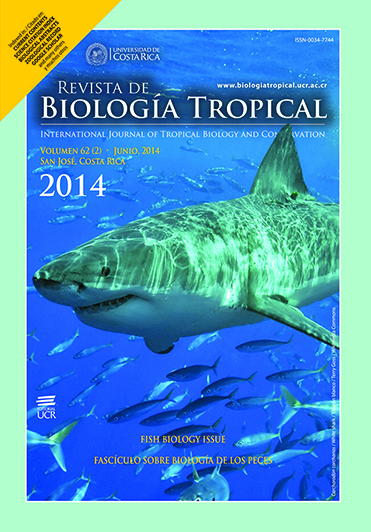Abstract
The existence of monodominant forests on well-drained soils in tropical regions has been widely reported. Such forests most likely result from a combination of both ecological and evolutionary factors. Under conditions of high seed and seedling mortality, vegetative reproduction could create a reproductive advantage leading to forest dominance, and profoundly affect the distribution of genetic variation in a clonal species. We investigated these effects in a low diversity forest site in Northeastern Costa Rica dominated by the species Pentaclethra macroloba, which sprouts from the root mass of fallen trees and from snapped trunks. We examined the population structure of juvenile P. macroloba growing in different soil types and across an elevational gradient. Using seven molecular markers, we genotyped 173 juvenile P. macroloba from 18 plots (six plots in seasonally inundated swamps, and 12 plots in upland non-swamp) spanning 50-300m in elevation at La Selva Biological Station and the adjacent Reserva Ecológica Bijagual in Northeastern Costa Rica. We answered two specific questions: (1) How extensive is clonal reproduction? and (2) what is the distribution of genetic diversity and structure?. We found that clonal reproduction occurred exclusively within inundated swamp areas. However, there was no significant difference between genetic diversity measures in swamp and non-swamp plots, which were both generally low when compared with other tropical forest species. Genetic structure was significant across all plots (FST=0.109). However, genetic structure among swamp plots (FST=0.128) was higher than among non-swamp upland plots (FST=0.093). Additionally, spatial autocorrelation among individuals within non-swamp upland plots was significant from the 25 to 100m spatial scale, but not within swamp plots. The degree of overall genetic structure we found in P. macroloba is high for a tropical forest tree. The incidence of clonal reproduction is a contributing factor in genetic differentiation, but the high structure among plots without clonal reproduction indicates that other factors contribute as well.
##plugins.facebook.comentarios##

This work is licensed under a Creative Commons Attribution 4.0 International License.
Copyright (c) 2014 Revista de Biología Tropical






